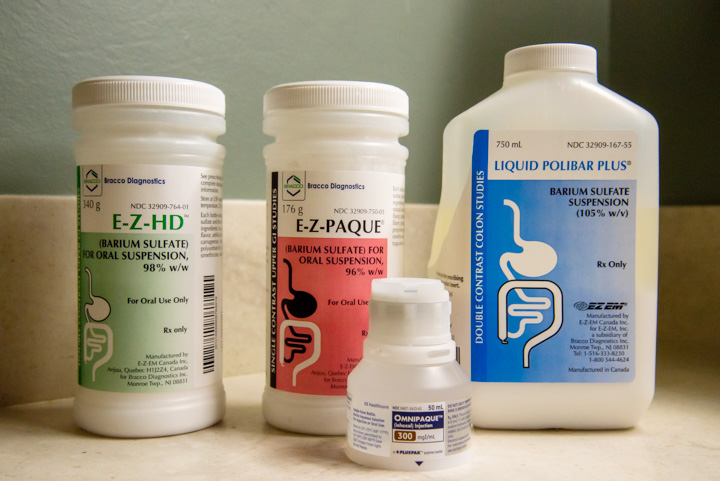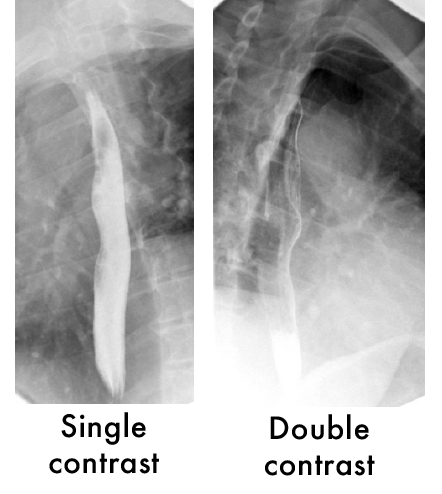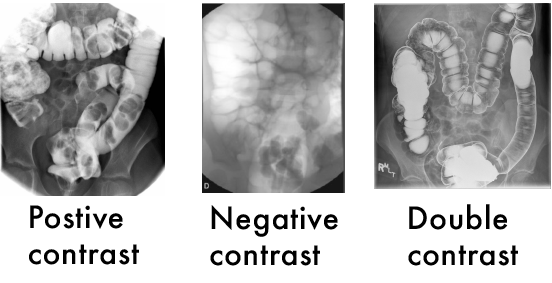Contrast
For certain applications contrast is administered - orally, rectally, intravenously, intrabiliary, etc. (anything that has a lumen and is accessible can be opacified with positive or negative contrast.)
Types of Contrast

Here we have various types of contrast used in fluoroscopic procedures. From left to right:
- Thicker barium used in double contrast examinations along with air
- Thinner barium used in single contrast examinations
- Omnipaque (short bottle) - water soluble, iodine based contrast used as a single contrast agent.
- Barium for double contrast enema examinations

These images demonstrate the difference between single contrast and double contrast as used in an esophagram. The single contrast demonstrates normal filling of the esophagus, and the double contrast outlines the normal luminal surface.
- Single contrast (positive) means that only one type of contrast is administered. This is typically used to assess filling of a luminal surface, assessing for filling defects.
- Barium is used because it is very heavy and therefore easily coats mucosal surfaces. Sometimes we dilute barium with water- "thick" or "thin" barium. If barium leaks into the peritoneum or thorax, it is nearly impossible to get out, and will appear on every subsequent exam.
- Water soluble contrast is important to use if there is a chance of leakage of contrast outside the lumen into the thorax or peritoneum.
- Double contrast involves the use of air as a second contrast method, which allows better visualization of details especially of the luminal surface.
- Positive contrast implies the use of some kind of material to fill the lumen with bright material- typically barium or iodine based contrast
- Negative contrast is provided by filling the lumen with air, making the inside of the structure darker than its surroundings
Example - Barium enema:

This is an evaluation of the colon, performed by inserting a catheter into the patient's rectum and injection contrast in a retrograde fashion to the level of the cecum. This can be done with positive single contrast (on the left, typically water soluble), negative contrast (in the middle, with air), and with double contrast (on the right, by instilling barium, draining it out, then inflating with air).